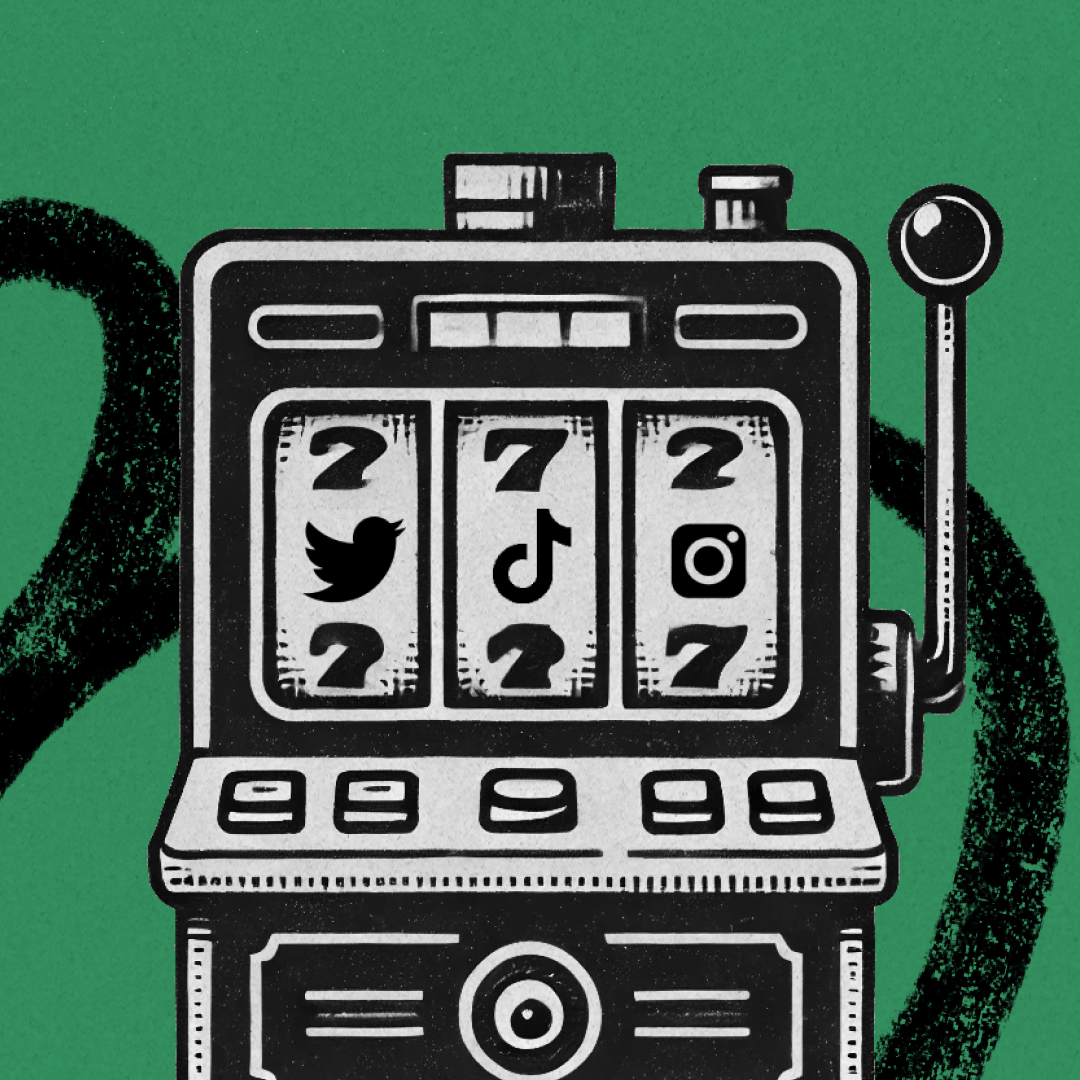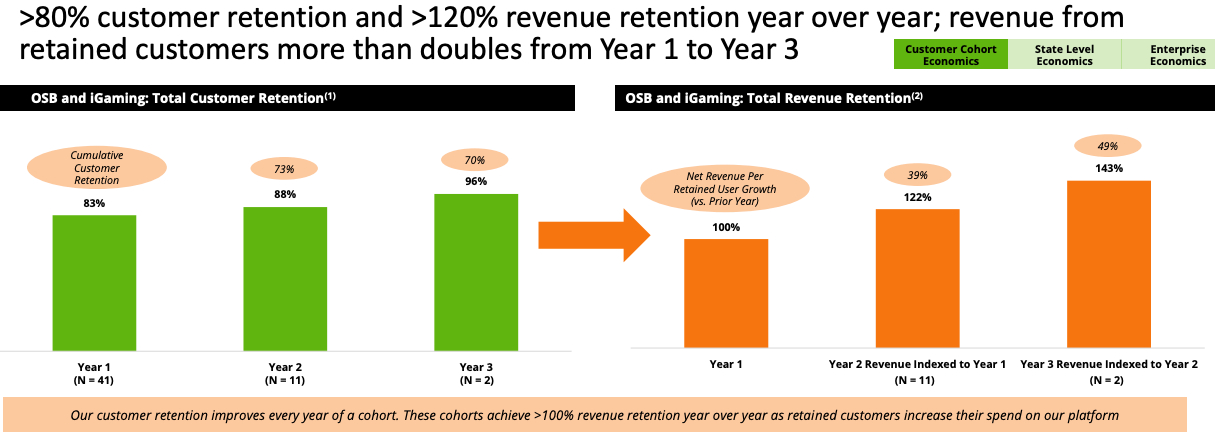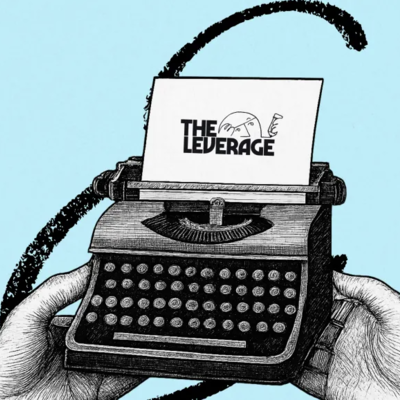
A recent paper from researchers at UCLA and USC detailed the deleterious impact of legalized gambling on consumers’ financial health, so we felt it was an apt time to republish Evan Armstrong’s article on how consumer products across industries—TikTok, diet apps, investing platforms, and, yes, sports betting platforms—have become increasingly addictive. Evan argues that as digital competition intensifies and technology inputs are commoditized, addiction has become a key differentiator and competitive advantage. But he also offers a hopeful perspective on how individuals can resist these addictive forces. When coupled with his piece from last week about consumers becoming addicted to AI chatbots, it’s clear that we’re entering a digital world that requires intention and care to navigate. He’s researching a framework for how to know when you should worry about addiction, but in the meantime, we wanted you all to read this piece to prepare.—Kate Lee
Was this newsletter forwarded to you? Sign up to get it in your inbox.
The first time I opened TikTok was the first time I was terrified by technology. At 9 p.m. on a Tuesday night in Southern Utah, I downloaded the app thinking I would check it out for five minutes. Then, without warning, I looked over at the clock and it was 3:30 a.m. I had been scrolling for six-and-a-half hours without pause. At first, I thought I had a stroke or the clock was wrong, but then I realized that I had just been laying in bed, flicking my thumb up the screen, my mind ignoring the passage of time. TikTok had grabbed control of me—body and mind. It was spooky.
The next day I tried to describe to my family what had happened and what TikTok was. After several minutes of failed explanations, I finally hit on something that felt right.
“It’s like TV on crack.”
It was the most addicting, dopamine-fueled app I’d ever used. Even the most chaotic reality TV show felt dull and slow in comparison.
My experience was not mine alone—the average TikTok user is on the app for 95 minutes a day. They open it eight times a day. The app is the third most used social app in America, topping Snapchat, LinkedIn, X, and Pinterest. It is used by over 1 billion people every month. Assuming a 50 percent dropoff from monthly to daily active users, the app consumes 84,608 man-years a day. This is just a mind-boggling amount of time collectively wasted by the human race.
Perhaps “TV on crack” was even an understatement of the service’s power. And it’s not the only thing that has gotten more addictive lately.
In 2010, the investor Paul Graham published an essay entitled, “The Acceleration of Addictiveness.” In it, he proposed that as technological progress continues its inexorable march forward, it will cause product improvements in every category. For the majority of products, that means they’ll become more addictive. Graham argues: “The world is more addictive than it was 40 years ago. And unless the forms of technological progress that produced these things are subject to different laws than technological progress in general, the world will get more addictive in the next 40 years than it did in the last 40.”
I would propose that this process of optimization has accelerated over the last decade. We are at a level of ultra-optimized consumer addiction of which TikTok is the exemplar. However, this addiction isn’t merely relegated to the realm of social media—it has penetrated nearly every category of product that consumers interact with.
As the world shifts to more digital competition, one of the most powerful long-term advantages is addiction. For businesses, this means that services that can grab and hold consumers’ attention for longer will be rewarded. For consumers, it means that we will have to be ruthless in our relationship with technology. Business best practices are not equivalent to consumer best interests. Whether professionally or personally, each of us will need to understand and reconcile ourselves to this phenomenon. In the years to come, whoever responds best will be rewarded.
This essay is an exploration of product categories where I think this trend is obvious, the reasons why I think it happened, and what we can try to do about it.
What are we selling here, anyway?
The impetus for this piece was actually pretty banal. As I was watching March Madness and the NBA playoffs, I kept getting slapped in the face by ads from DraftKings and FanDuel.
“WIN MONEY, HAVE FUN, IT LITERALLY CAN’T GO WRONG,” my TV would scream at me during every free throw attempt.
For the uninitiated, these are sportsbooks. They show ads during games to encourage watchers to place money on the outcomes. Weirdly, companies like this don’t actually try to make money from the outcomes of each game. The money comes from what is called “the juice” in the industry. That’s the fees books tack on top of each transaction. The real money is made in volume, not necessarily individual outcomes. Because long-term volume is more important than maximizing the potential revenue from a single bet, companies are incentivized to wrap their tentacles around their prey—sorry, users—and never let them go.
At first, I thought the reason consumers used sports betting apps was to make money. However, as I interviewed people for this piece, I realized that this was an entertainment product. In interviews, customers would mention that normal sports “became boring” and they couldn’t stop putting money down because it “made the game more intense.”
The numbers match the narrative I heard from these user calls. DraftKings looks for a two-to-three-year- payback period from each customer cohort while simultaneously boasting 83 percent first-year retention rates as of 2022. In comparison, research has pegged any retention north of about 60 percent as top-shelf. So there really is something very sticky about this business.
Keep in mind the proliferation of online gambling will likely destroy addicts' lives, create new gambling addicts, and just probably isn’t a great thing for society as a whole. Moral ramifications of online gaming aside, we can agree that this is a business that flourishes when more people put more of their hard-earned cash in, with absolutely no limits on how much they can take.
Source: DraftKings.
A similar pattern of layering gamification and higher retention onto existing markets via addictive products happened everywhere I looked. A few more quick examples:
The Only Subscription
You Need to
Stay at the
Edge of AI
The essential toolkit for those shaping the future
"This might be the best value you
can get from an AI subscription."
- Jay S.
Join 100,000+ leaders, builders, and innovators

Email address
Already have an account? Sign in
What is included in a subscription?
Daily insights from AI pioneers + early access to powerful AI tools










Comments
Don't have an account? Sign up!
As a product growth guy, this hit home. Great analysis, Evan 👏